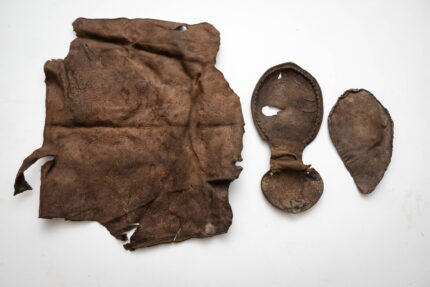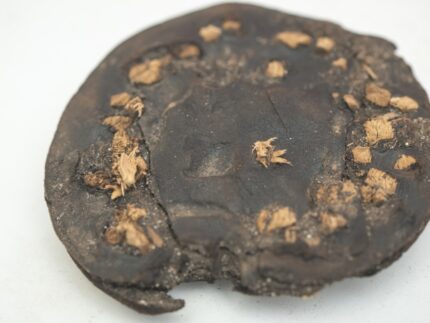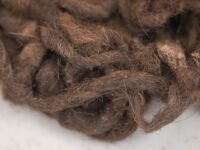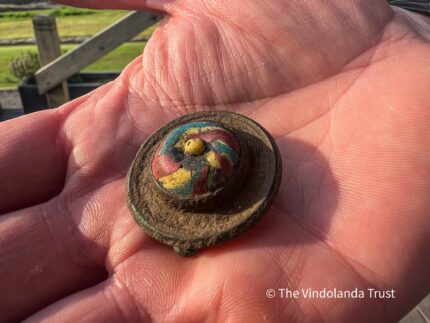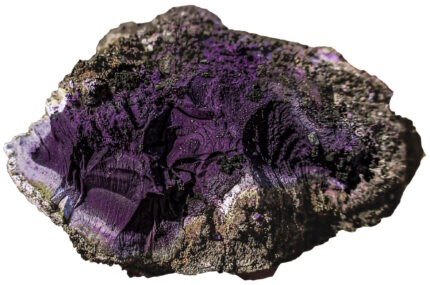 Liberty Leading the People, French Romantic painter Eugene Delacroix’s iconic tribute to freedom won by armed revolution, has been restored to its brilliant original colors. Eight layers of oxidized varnish, applied in misguided previous attempts to revive its colors that backfired spectacularly when they yellowed, were removed. The heavy grime and dust that had settled in the varnish layers were removed with them.
Liberty Leading the People, French Romantic painter Eugene Delacroix’s iconic tribute to freedom won by armed revolution, has been restored to its brilliant original colors. Eight layers of oxidized varnish, applied in misguided previous attempts to revive its colors that backfired spectacularly when they yellowed, were removed. The heavy grime and dust that had settled in the varnish layers were removed with them.
The allegorical representation of Liberty as a bare-breasted woman in a Phrygian cap brandishing the French tricolor flag in her right hand and a bayonetted musket in her left as she exhorts Parisians from different social classes to the barricades was a depiction of current events, not the French Revolution of 1789. Delacroix painted it in October 1830, just three months after the July Revolution that had driven King Charles X (youngest brother of the guillotined Louis XVI) to abdicate and enthroned his distant cousin Louis Philippe I as constitutional monarch.
Louis Philippe’s Ministry of the Interior bought the painting in 1831, seeing it as great PR for the “citizen king” who had come to power thanks to the revolution it depicts. They even planned to hang it in the throne room of the Palais du Luxembourg, then the home of the French senate. That plan fell by the wayside when another revolution, the anti-monarchist Paris Uprising of 1832 sparked by the death of popular reformist general Jean Maximilien Lamarque, suddenly made the idea of revolutionary violence, barricades and bodies stacked like cordwood distinctly less palatable to the government. It was returned to Delacroix who stashed it at his aunt’s house to keep it out of harm’s way.
It would not be seen in public again until after yet another revolution, the Revolution of 1848, established the Second Republic. It was only on display briefly and then went back underground until it reappeared in the Salon of 1855. Finally France, now on its Third Republic, bought the painting for good this time in 1874 and it entered the collection of the Musée du Louvre.
The first extensive restoration took place in 1949 to repair damage inflicted during the hasty moves museums were forced to do during World War II. After that, it received minor touch-ups and repainting on a regular basis. It was loaned out only once, to Japan in 1999, and at that time the frame was replaced.
 The canvas is so large (8.5ft x 10.5ft), that it was taken down from the wall, the frame removed and the six-month restoration done in situ. Before the cleaning began, the painting was analyzed with X-ray, UV and IR imaging that were compared to archive photographs to give restorers a baseline to work from. They then tested the cleaning process on tiny snippets of the painting.
The canvas is so large (8.5ft x 10.5ft), that it was taken down from the wall, the frame removed and the six-month restoration done in situ. Before the cleaning began, the painting was analyzed with X-ray, UV and IR imaging that were compared to archive photographs to give restorers a baseline to work from. They then tested the cleaning process on tiny snippets of the painting.
As the varnish layers were removed, details emerged that had been obscured by the flattening effect of the yellow varnish. Delacroix layered color and textures to create contrasts that differentiated figures in the complex, dynamic composition and covey the illusion of three dimensional depth. For example, the cleaning revealed that the boy with the pistol is actually running slightly in front of Liberty instead of by her side, that there’s a shoe in the bottom left that previously blended into the paving stones and how the facades of the buildings on the right are each different from the one next to it.
Liberty herself proved to be a surprising revelation. Her tunic, heretofore believed to be yellow, is actually light grey with yellow added more saturated at the bust and then thinning and fading down her legs. The thick, even yellow coverage was overpainting applied in a 1949 restoration.
Benedicte Tremolieres, one of the two restorers to clean the canvas, said it was “enchanting” to see the painting reveal its secrets.
Her colleague Laurence Mugniot agreed.
“Delacroix hid tiny dabs of blue, white and red all over in a subtle sprinkling to echo the flag,” she said.
She pointed for example to the “blue eye with a speck of red” of one of the characters.
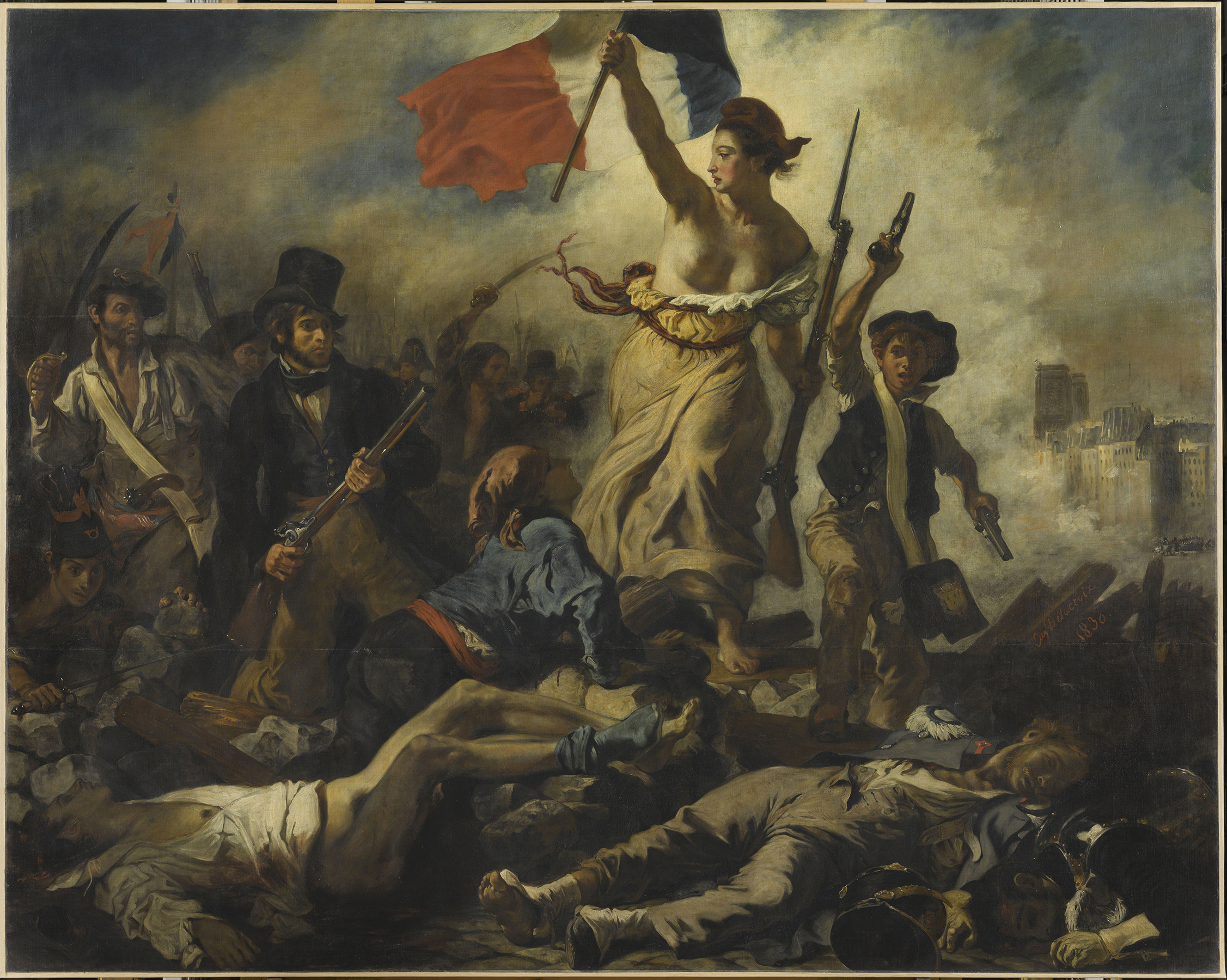

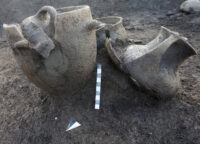
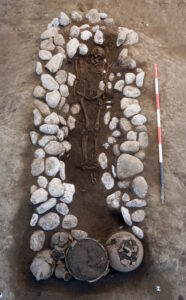 An Iron Age necropolis that predates the rise of Rome has been discovered in the town of Amorosi, 30 miles northeast of Naples. A preventative archaeology excavation before construction of a power plant at a site near the Volturno river unearthed a large funerary area in use between the third quarter of the 8th century B.C. and the late 7th century B.C. Archaeologists excavated a total of 88 tombs, both cinerary and inhumation burials, replete with grave goods identifying them as belonging to the Culture of the Pit Tombs, a pre-Samnite people that inhabited the interior of the region that is today known as Campania.
An Iron Age necropolis that predates the rise of Rome has been discovered in the town of Amorosi, 30 miles northeast of Naples. A preventative archaeology excavation before construction of a power plant at a site near the Volturno river unearthed a large funerary area in use between the third quarter of the 8th century B.C. and the late 7th century B.C. Archaeologists excavated a total of 88 tombs, both cinerary and inhumation burials, replete with grave goods identifying them as belonging to the Culture of the Pit Tombs, a pre-Samnite people that inhabited the interior of the region that is today known as Campania.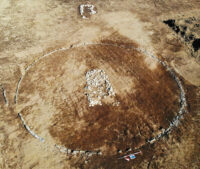
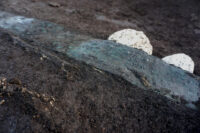 The grave goods evince distinct gender differences. Males were buried with weapons, while women’s graves contained jewelry and ornaments made of bronze, amber and worked bone. Both men and women were buried with pottery of various shapes and sizes, usually placed at the feet of the deceased. Some burials were notable for the exceptional objects, for example a large, richly decorated bronze belt found in one grave. In addition to the pit tombs, two stand-out graves in the literal sense were large mound burials 50 feet in diameter that must have belonged to the highest ranking elites of the community at that time.
The grave goods evince distinct gender differences. Males were buried with weapons, while women’s graves contained jewelry and ornaments made of bronze, amber and worked bone. Both men and women were buried with pottery of various shapes and sizes, usually placed at the feet of the deceased. Some burials were notable for the exceptional objects, for example a large, richly decorated bronze belt found in one grave. In addition to the pit tombs, two stand-out graves in the literal sense were large mound burials 50 feet in diameter that must have belonged to the highest ranking elites of the community at that time.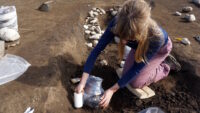
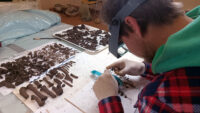 The archaeological team recovered several parts of the graves in soil blocks. The local Superintendency of Archaeology of Caserta has enlisted experts to carry out micro-excavations of the soil blocks in a warehouse laboratory specially set up for this task. The materials they recover will be analyzed, as will the bone remains and the soil itself.
The archaeological team recovered several parts of the graves in soil blocks. The local Superintendency of Archaeology of Caserta has enlisted experts to carry out micro-excavations of the soil blocks in a warehouse laboratory specially set up for this task. The materials they recover will be analyzed, as will the bone remains and the soil itself.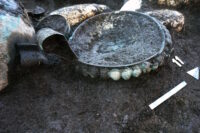
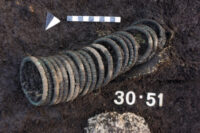 The municipality of Amorosi has begun to plan a museum to exhibit the archaeological treasures found in the excavation (and future ones) in the hope of attracting cultural heritage tourism. Next year is a Jubilee year, and millions of visitors are expected to descend on Italy. The town is moving quickly to get a museum up and running to take advantage of the influx of Jubilee crowds.
The municipality of Amorosi has begun to plan a museum to exhibit the archaeological treasures found in the excavation (and future ones) in the hope of attracting cultural heritage tourism. Next year is a Jubilee year, and millions of visitors are expected to descend on Italy. The town is moving quickly to get a museum up and running to take advantage of the influx of Jubilee crowds.